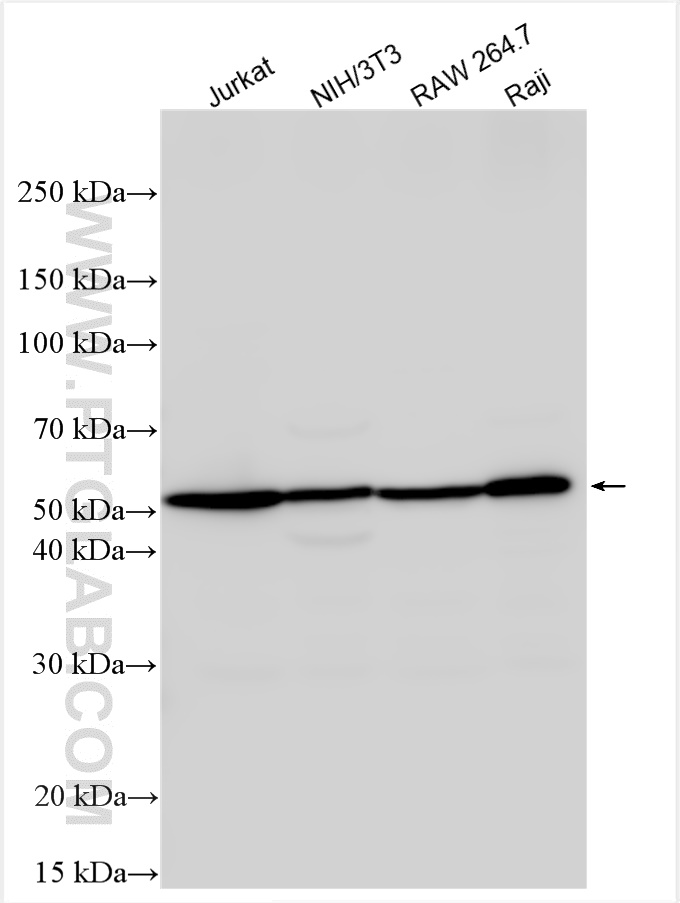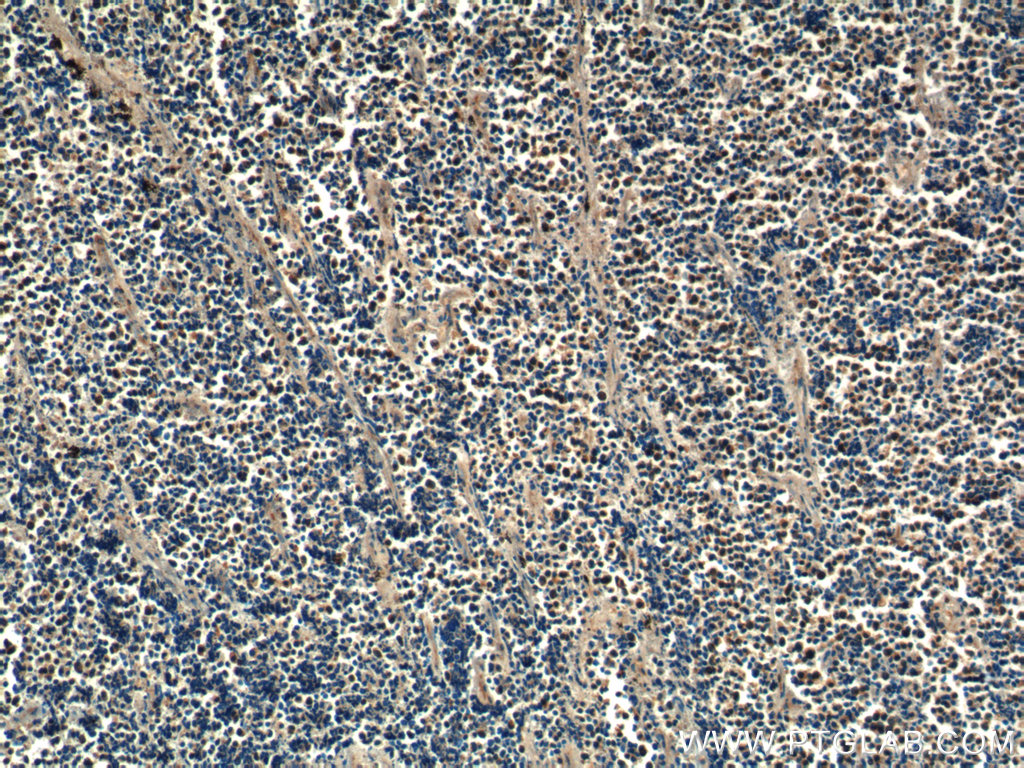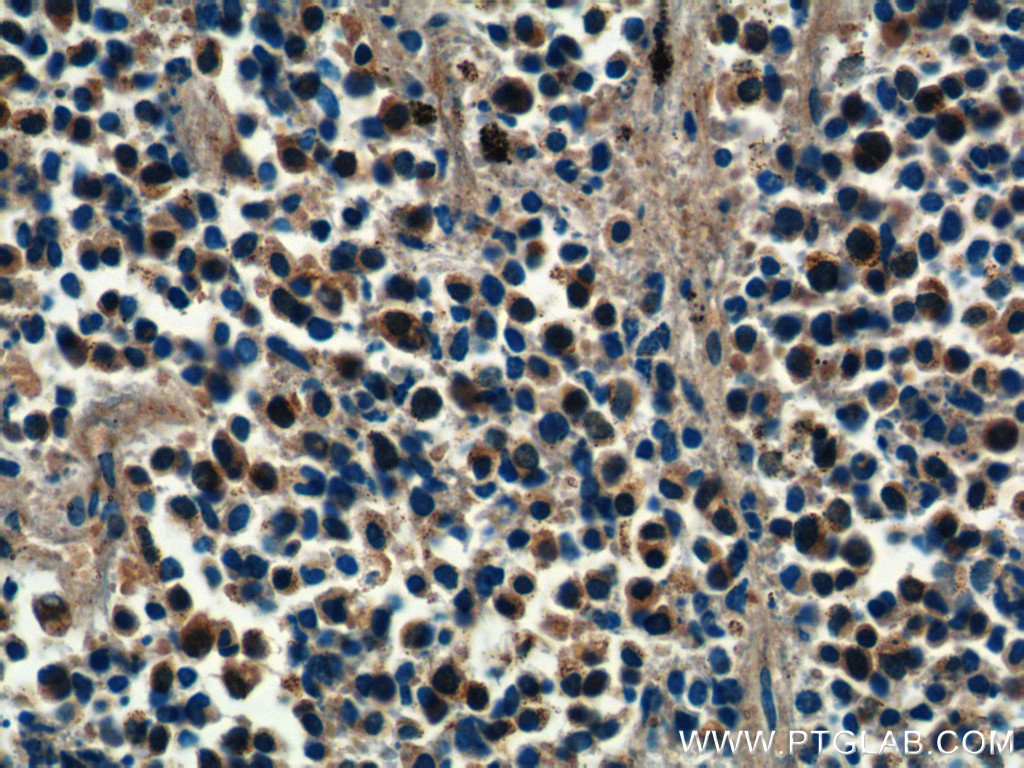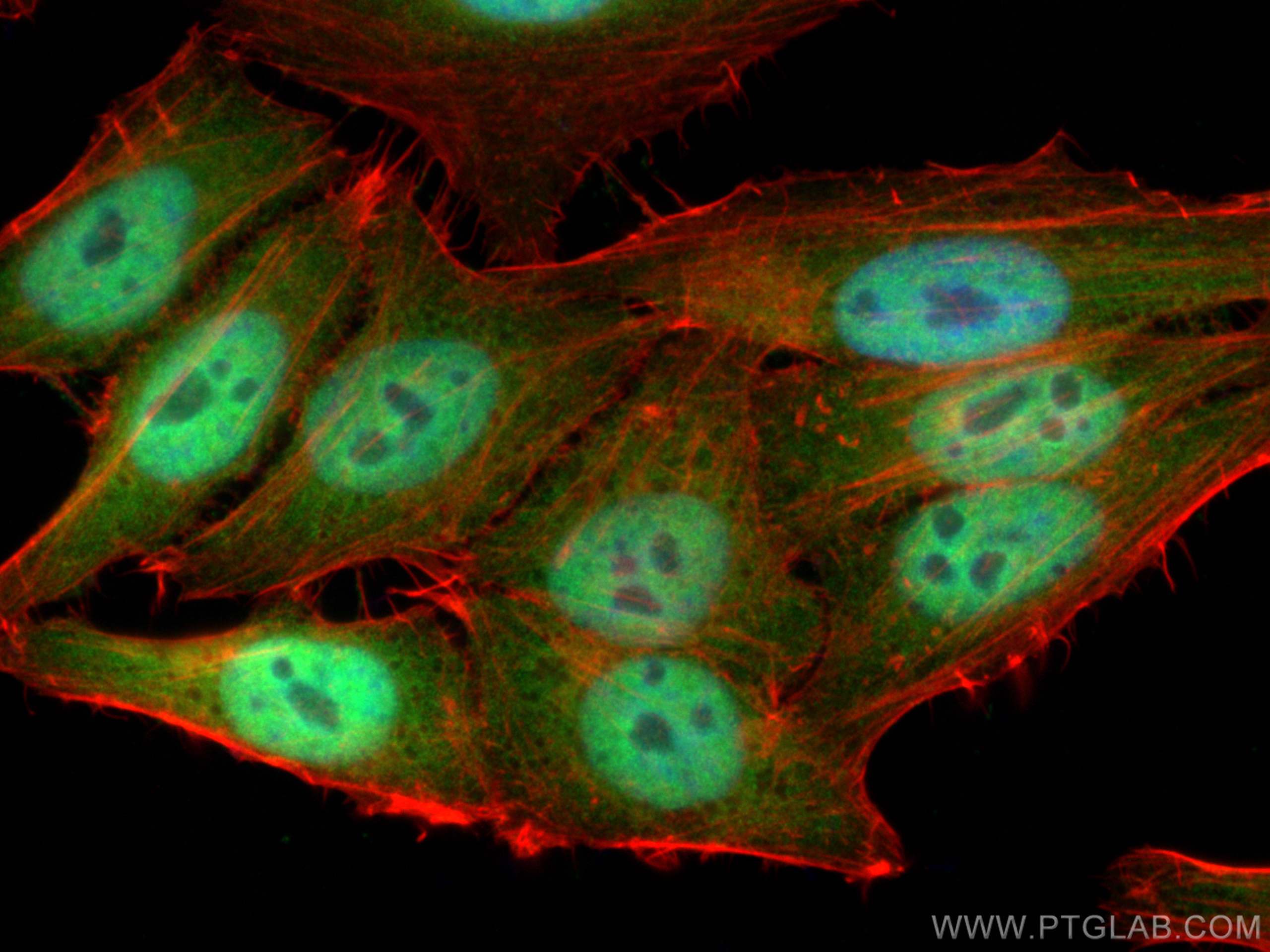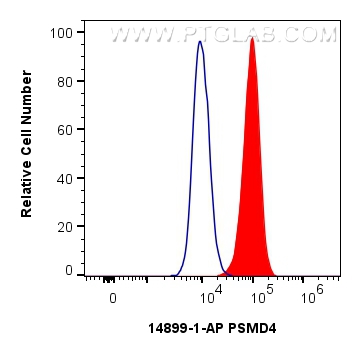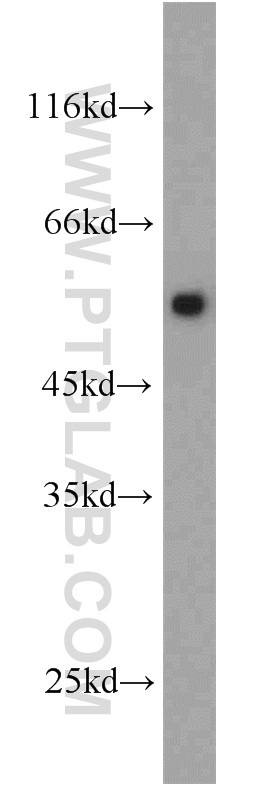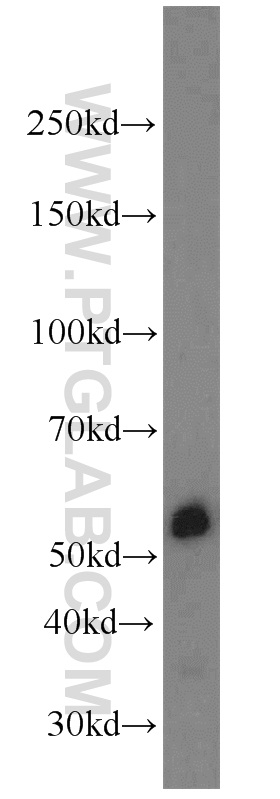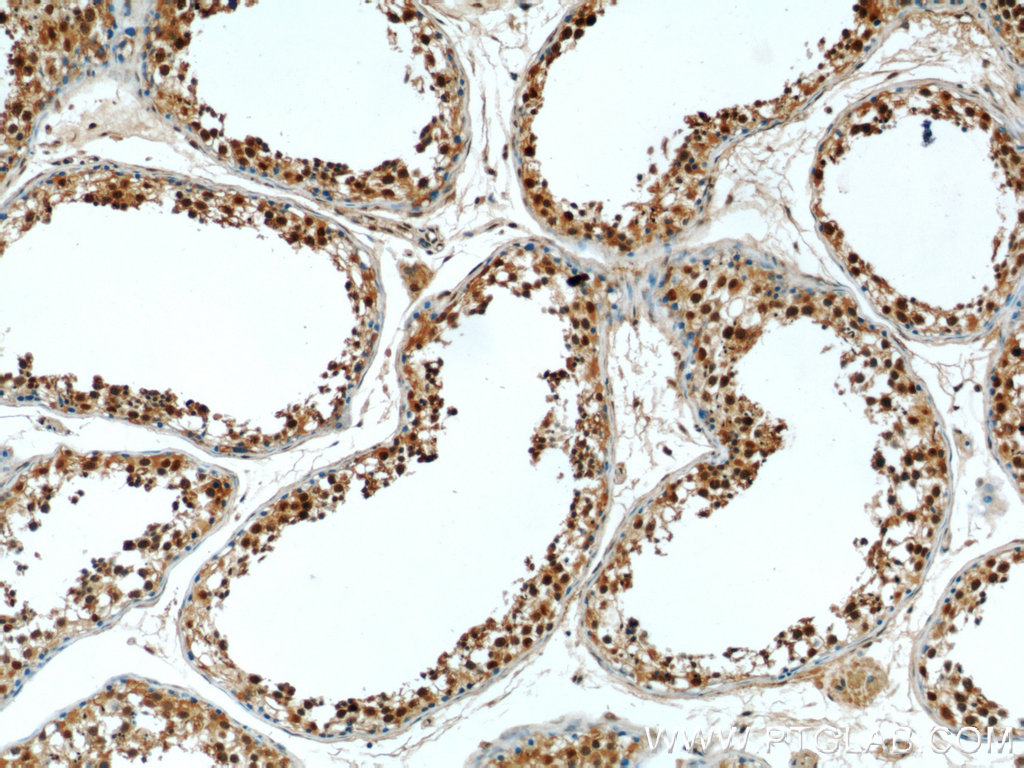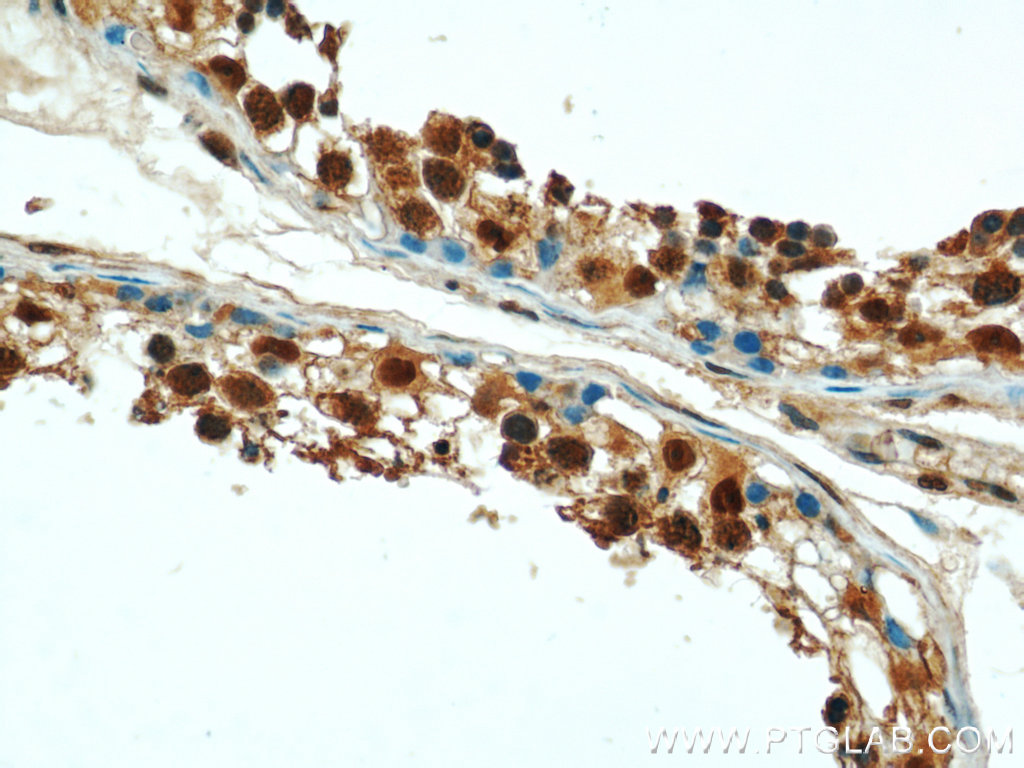验证数据展示
经过测试的应用
| Positive WB detected in | Jurkat cells, rat spleen tissue, K-562 cells, HeLa cells, NIH/3T3 cells, RAW264.7 cells, Raji cells |
| Positive IHC detected in | human lung cancer tissue, human testis tissue Note: suggested antigen retrieval with TE buffer pH 9.0; (*) Alternatively, antigen retrieval may be performed with citrate buffer pH 6.0 |
| Positive IF/ICC detected in | HepG2 cells |
| Positive FC (Intra) detected in | HepG2 cells |
推荐稀释比
| 应用 | 推荐稀释比 |
|---|---|
| Western Blot (WB) | WB : 1:5000-1:50000 |
| Immunohistochemistry (IHC) | IHC : 1:50-1:500 |
| Immunofluorescence (IF)/ICC | IF/ICC : 1:50-1:500 |
| Flow Cytometry (FC) (INTRA) | FC (INTRA) : 0.80 ug per 10^6 cells in a 100 µl suspension |
| It is recommended that this reagent should be titrated in each testing system to obtain optimal results. | |
| Sample-dependent, Check data in validation data gallery. | |
产品信息
14899-1-AP targets PSMD4 in WB, IHC, IF/ICC, FC (Intra), ELISA applications and shows reactivity with human, mouse, rat samples.
| 经测试应用 | WB, IHC, IF/ICC, FC (Intra), ELISA Application Description |
| 文献引用应用 | WB, IHC, IF |
| 经测试反应性 | human, mouse, rat |
| 文献引用反应性 | human, mouse |
| 免疫原 | PSMD4 fusion protein Ag6691 种属同源性预测 |
| 宿主/亚型 | Rabbit / IgG |
| 抗体类别 | Polyclonal |
| 产品类型 | Antibody |
| 全称 | proteasome (prosome, macropain) 26S subunit, non-ATPase, 4 |
| 别名 | Multiubiquitin chain-binding protein, MCB1, ASF, AF, 26S proteasome non-ATPase regulatory subunit 4 |
| 计算分子量 | 41 kDa |
| 观测分子量 | 50 kDa |
| GenBank蛋白编号 | BC002365 |
| 基因名称 | PSMD4 |
| Gene ID (NCBI) | 5710 |
| RRID | AB_2170627 |
| 偶联类型 | Unconjugated |
| 形式 | Liquid |
| 纯化方式 | Antigen affinity purification |
| UNIPROT ID | P55036 |
| 储存缓冲液 | PBS with 0.02% sodium azide and 50% glycerol , pH 7.3 |
| 储存条件 | Store at -20°C. Stable for one year after shipment. Aliquoting is unnecessary for -20oC storage. |
背景介绍
PSMD4, also named as MCB1, AF or ASF, belongs to the proteasome subunit S5A family. PSMD4 is a 50-kD subunit of the regulatory complex of the 26S proteasome. It binds and presumably selects ubiquitin-conjugates for destruction. PSMD4 displays selectivity for longer polyubiquitin chains. It modulates intestinal fluid secretion. PSMD4 is exposed on the sperm acrosomal surface, a notion that was further supported by the binding of non-cell permeant, biotinylated proteasomal inhibitor ZL3VS to the sperm acrosome. It is involved in the sperm-ZP penetration during fertilization. (PMID: 20526895) This antibody is specific to PSMD4.
实验方案
| Product Specific Protocols | |
|---|---|
| WB protocol for PSMD4 antibody 14899-1-AP | Download protocol |
| IHC protocol for PSMD4 antibody 14899-1-AP | Download protocol |
| IF protocol for PSMD4 antibody 14899-1-AP | Download protocol |
| FC protocol for PSMD4 antibody 14899-1-AP | Download protocol |
| Standard Protocols | |
|---|---|
| Click here to view our Standard Protocols |
发表文章
| Species | Application | Title |
|---|---|---|
Nat Neurosci Loss of nuclear UBE3A causes electrophysiological and behavioral deficits in mice and is associated with Angelman syndrome. | ||
J Cell Biol The transition zone protein Rpgrip1l regulates proteasomal activity at the primary cilium. | ||
Cancer Res The Ubiquitin-like Protein FAT10 Stabilizes eEF1A1 Expression to Promote Tumor Proliferation in a Complex Manner. | ||
Oncogene The degradation of p53 and its major E3 ligase Mdm2 is differentially dependent on the proteasomal ubiquitin receptor S5a. | ||
J Cell Sci S5a binds to death receptor-6 to induce THP-1 monocytes to differentiate through the activation of the NF-κB pathway. | ||
Mol Cell Proteomics Proteaphagy in Mammalian Cells Can Function Independent of ATG5/ATG7. |
